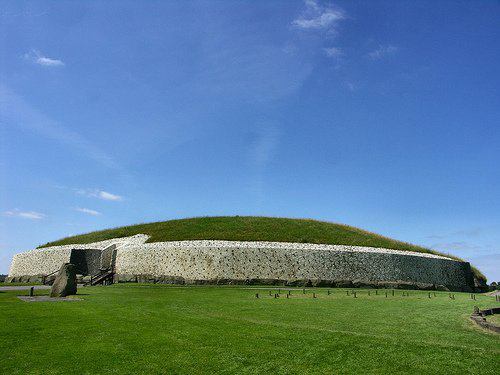
The Neolithic passage tomb at Newgrange is the most visited archaeological site in Ireland. Over 5000 years old it pre-dates the first phase of Stonehenge by 1000 years and the Egyptian pyramids by 400 years. It is a truly massive structure measuring 76 m in diameter by 12 m in height and it contains over 200,000 tonnes of earth and stone in its fabric. Indeed, it’s glistening façade of quartz is one of the country’s most memorable vistas. However, as the images below attest, Newgrange has not always looked so pristine.
1699: This image shows Edward Lhywd’s survey of Newgrange (after Stout & Stout 2008, p. 98, fig. 66). It is the first known plan of the tomb and it was drawn shortly after the entrance into the mound was rediscovered in 1699. Up until that date the entrance had actually been sealed and it was only uncovered again when the local landowner, Charles Campbell, began quarrying the mound for stones.
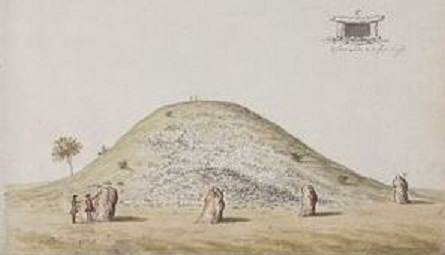 1775: A view of Newgrange from c. 1775 by the noted antiquarian artist Gabriel Beranger. It shows a large mound of earth and stone that is nearly devoid of trees. Although a number of the standing stones which surround the mound are illustrated, the tomb entrance is not visible (it is shown in a separate drawing).
1775: A view of Newgrange from c. 1775 by the noted antiquarian artist Gabriel Beranger. It shows a large mound of earth and stone that is nearly devoid of trees. Although a number of the standing stones which surround the mound are illustrated, the tomb entrance is not visible (it is shown in a separate drawing).
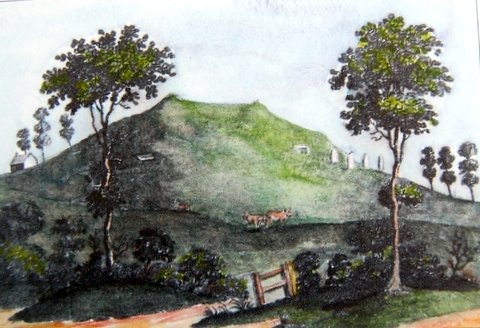 1790: This engraving of Newgrange was included in Edward Ledwich’s Antiquities of Ireland, which was published in 1790 (after Stout & Stout 2008, p. 97, fig. 65). The mound is once again shown largely treeless and in this image the passage entrance can be clearly seen. A large triangular stone, which formerly stood directly in front of the entrance is also illustrated.
1790: This engraving of Newgrange was included in Edward Ledwich’s Antiquities of Ireland, which was published in 1790 (after Stout & Stout 2008, p. 97, fig. 65). The mound is once again shown largely treeless and in this image the passage entrance can be clearly seen. A large triangular stone, which formerly stood directly in front of the entrance is also illustrated.
1892: A photo of Newgrange taken by George Coffey in 1892 (source). Unlike the earlier, 18th century depictions the mound is now covered in a thick scrub of trees and bushes.
Late 19th century: This atmospheric shot of the passage tomb entrance shows a man emerging from its dark interior. It was taken by R. J. Welch sometime in the late 19th century and it shows an overgrown and partially disturbed mound. Although the roofbox, through which the winter solstice sun rays should pass, is completely blocked, its decorated stone lintel can still be partially discerned c. 1 m above the entrance passageway.
1910: A child standing at the tomb entrance, circa 1910 (source). The area around the doorway has been cleaned up considerably since Welch’s photo and an iron gate now controls access to the passageway. The soil around the beautifully decorated entrance kerbstone has also been dug out and cleared, although the roofbox remains blocked. The photo is from the National Library of Ireland’s Tempest collection.
1930s: Image of Newgrange in the 1930s (it’s from the collection of Bill & Maureen Cox)
1950s: This photo illustrates the mounds appearance in the 1950’s prior to the start of archaeological excavations at the site in the 1960s (source).
1950s: A close up of the entrance into Newgrange prior to the 1960s excavations and the subsequent restoration work (photo OPW).
1967-67: These two image show the archaeological excavation underway at Newgrange (source). This extensive work was carried out between 1962 and 1967 under the expert direction of Professor M. J. O’Kelly. It revealed a wealth of information about the monuments origins and history. However, by its very nature is saw much of the mound material removed and this had to be reinstated after the archaeological excavation was completed.
1967-74: Works on repairing the mound and its surrounds began in earnest in 1967 and were not fully completed until 1974. This image shows the passageway being reconstructed and reinforced. Professor O’Kelly (second from the right) is pointing towards the roofbox (after Stout & Stout 2008, p. 47, fig. 30) .
1967-74: Probably the greatest change seen during these restoration works was the addition of 3 m high quartz wall to the front of the tomb. This addition to the monument was based on M. J. O’Kelly’s interpretation of the excavation results. He had discovered a thick layer of quartz stones spreading out in front of the tomb kerbstones for a distance of approximately 7 m, which he believed represented the remains of a collapsed wall. Thus on his advice a quartz facade was added to the tomb. However, as the quartz wall was deemed too unstable to support the weight of the cairn on its own, a 4 m high, reinforced steel and concrete wall had to be erected behind it. The quartz stones were then embedded into the concrete.
Not surprisingly this striking quartz wall caused much debate at the time and the arguments about its authenticity still rage on.
Further reading
Stout G. & Stout M. 2008. Newgrange. Cork University Press. Cork.


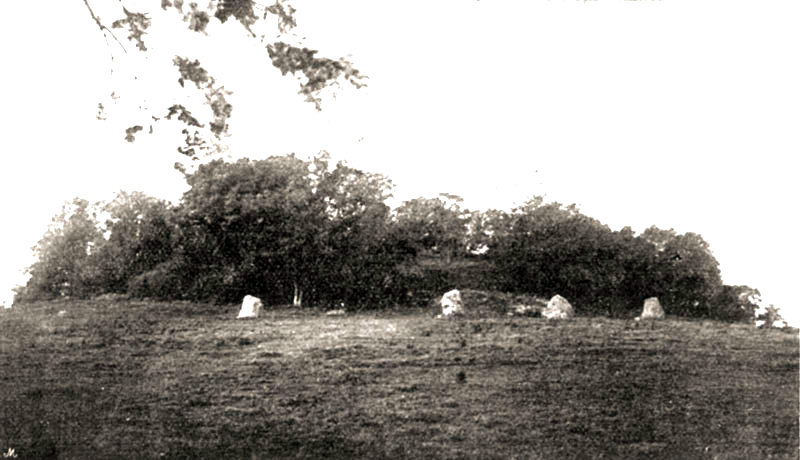
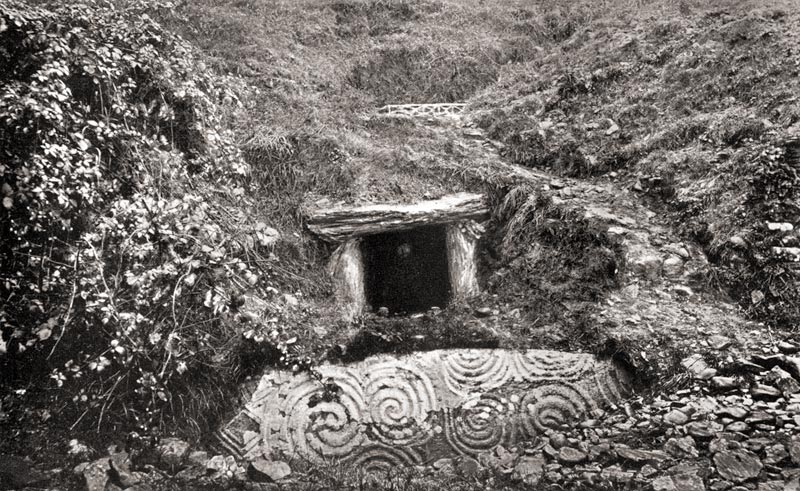
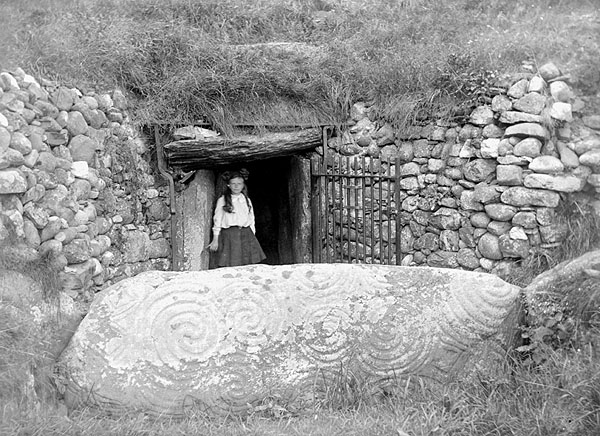

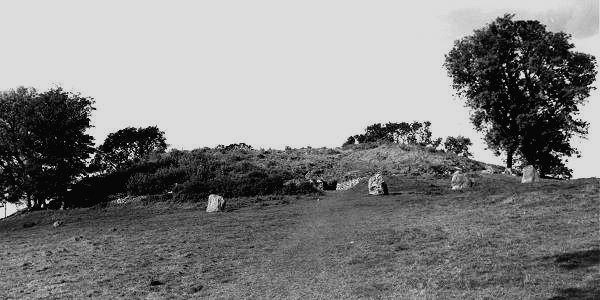
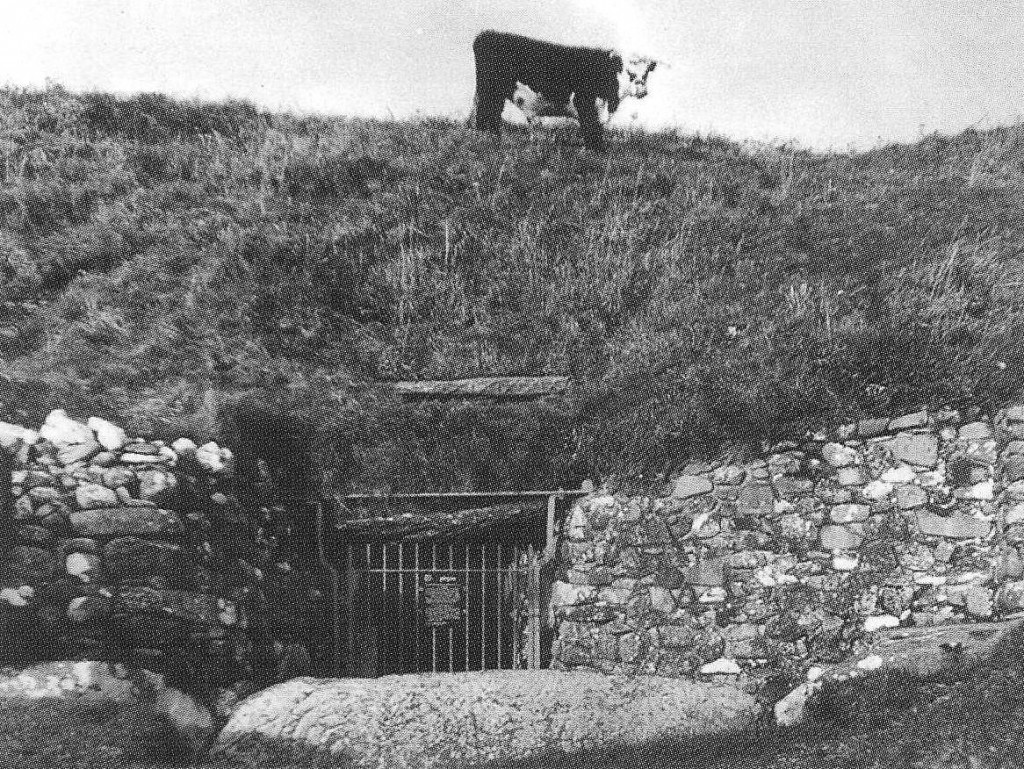

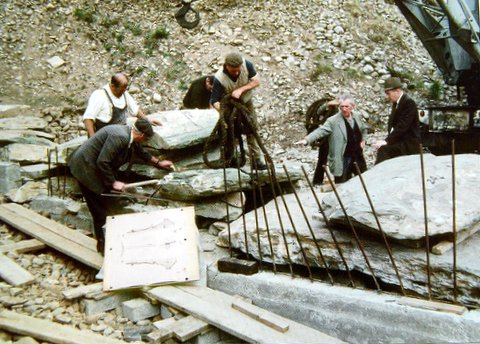
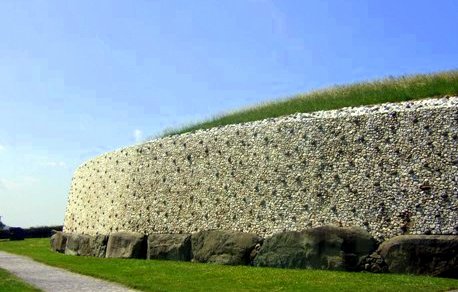


This is a great collection Colm.
Will be of interest to a lot of people.
Thanks Martin
Great,,, some of us are learning the truth x
This is very informative and well researched article. I came from Bangladesh to visit Ireland. I am now in cork. I am also a PhD student on archaeology. My contact in cork – 00353864029693. Can I meet the author and visit the new grange. Lt Col Moazzem
Lovely collection of images here, thanks for sharing. I visited Newgrange in 1993 and may visit again this year. During my visit in 1993 there wasn’t much information available at the site, and we could walk and meander around without constraint. I understand that UNESCO heritage status was given to the site in 1993 in order to protect it for future generations, followed by restrictions to site access by the public. I wonder if you had thought to include a mention of this, and discuss how changes to access of the site affect people’s experiences of the site, and conservation of the site?
pay the fee, take the tour, support the project and it’s preservation
I had visited Newgrange Passage Tomb but was so impressed with the information contained herein.
Thank you for this information on how it looked before and the work carried out to preserve this great site
Thanks Patrick
Colm
Thanks for sharing this pictures/photos. It’s truly amazing how Newgrange has changed over the years. As much as one may question the current look, maybe it was necessary to preserve the site for future generations.
Best wishes,
Liam
This pictures are awesome ! Thank you ! I visited Newgrange last year and it’s hard to figure how Newgrange was through the ages.
I believe we haven’t passag tombs in the south of France and Newgrange intrigued me a lot. I had to do some researchs after my trip to learn more about Newgrange and passage tombs.
Dear Colm
Would you happen to know where the 2 quartz blocks from the roofbox of Newgrange went to? O’Kelly suggests that there were 2 based on the scratches. Does this sound correct? I understand there are many slabs of quartz in museums across Ireland….but do you know where this on is?
Sorry Kim, I don’t know. I’d imagine all the structural stone would have stayed on-site at Newgrange. I’ll see if I can dig out any info. All the best, Colm
Thanks Colm for your reply.
In researching Newgrange from many different websites, apparently they are missing. O’Kelly stated they were not there. The pictures that I have seen from the early 1900’s, show a metal gate on the front door. Perhaps in order to attach the doors the rock needed to be removed.? (I am assuming that this is the area they deem the ‘roofbox’, I am not familiar with this word).
I have also read that quartz stones are in the Dublin Museum? This could be quite the investigation!
Best of luck.
Ok,..correction …as I go back and look at the pics again. So, that is the roofbox at the front, but the gate is attached at the side. Welch’s picture shows the top pretty covered with grass and stuff. Perhaps if it went missing you would be looking at late 19th century and before.
Just thought it was interesting…..
hi colm I wonder if you have any information on the building of newgrange with regards of masons .I am trying to put together a history of masons in cork but I am interested in masons all over Ireland and it would seem to me that this structure must have had some one with an understanding of stone and proportions overseeing its original construction.we are led to belive that the masonry trade spread across Europe from the east . but according to some of the older masons that I have talked to in their 80,s they belive that irish masons were present at the building of the tower of bable and they used their secret language (the bearlager na saor) from that time. I think that it makes sense that masons from Ireland did travel with the monks who went and recorded the great works of Europe during the dark ages. when you think that newgrange was built long before some of the better known structures around Europe so why can we not say that it was the irish mason who as the years passed improved his skills as they moved from country to country to the point that the buildings became more ornate in their construction. I have a facebook page called (cork masons historical society) which has lots of old photos and some information on the masonry trade in cork that may interest you I have also made a film documentary called( set in stone) about the people who worked in the masonry trade in cork and our secret language also I made a film about Maurice o donnell called (the last statue maker) he became well known as the man who made the moving statue in ballinspittle these films were made with eddie noonan of framework films.
Hi James, thanks very much for your detailed comment. We really don’t know too much about the ‘masons’ who built Newgrange. It is just so long ago. It must have been a monumental task, though, involving large numbers of people and taking years to complete. All the best, Colm
They were removed to the National Museum (Archaeology) in Kildare Street, Dublin, as they were deemed to be in need of preservation. I believe they form part of a ‘Newgrange’ display in the same building.
Thank you Colm for a great collection. I well remember getting the key to the mound in the early 1960s from a house down the road, climbing over the entrance stone, unlocking the gate and entering the passage with lit candles, on numerous occasions, as I lived in Drogheda and used cycle there. The roof box area was filled in, and only opened up later during the excavations. There could have been some quartz stones set into the “roof box”, that were discovered but the other quartz rocks at the site are white not translucent and so would not have served any useful purpose. I was lucky enough to be in the chamber the day before winter solstice in 1981 when the rising sun illuminated the passage and we could see each other easily as our eyes had acclimated to the dark of predawn. It was spectacular.
I noticed that the major vertical line on the entrance stone (which has space to insert your face on the passage side) lines up perfectly with the large standing stone to its south, to point to the exact spot on the horizon where the sun rises on the solstice. I have not seen reference to my observation anywhere but I had always wondered about the significance of that vertical line. Thank you for these images. They bring back great memories Michael Sheehan
Thanks a million for sharing that Michael, I would have loved to have seen in the monument prior to restoration. Hopefully one day I’ll get to see the solstice sunrise from the inner chamber too 🙂 Colm
Thank you Michael.
I lived at Bru Na Boinne before the new site was built and I know lots that i never saw written either re s(tones) and altering stone and sacred well – all removed and no one in OPW knows where
Michael, which of the standing stones at the front is the one that lines up with the vertical line on the entrance stone?
The kerbstones of Newgrange were quarried at Clogherhead about 15 km to the East and North of the monument. i have noticed that close to hide tide that whirlpools form in front of the entrance to a natural cave which faces East and therefore has a natural Equinox alignment.
http://www.boards.ie/vbulletin/attachment.php?attachmentid=291562&d=1391119788
There is a possibility that it is a natural prototype for the spectacular Solstice light show of Newgrange insofar as such a spectacle is impractical on the coast due to the weak nature of sunlight as it emerges from the horizon.
Great collection of pictures – many thanks!
I love Newgrange – great place to visit. Knowth and Dowth are also worth visting at the same time for the contrast.
Thanks for the article!
I visited he largely undisturbed ruins of Newgrange when visiting for the first time in 1975 as a student. Access was not restricted & you got a sense that things were still the way they were many hundreds of years ago. It wasn’t until government and political forces moved in and tried to commercialize it that it lost all of its charm and connection with history. Irish archeology has been badly handled by the so-called authorities and I now believe it is time to hand it over to the well-meaning amateurs who just want to discover artifacts of true significance and turn them over to the authorities. We have to trust and have faith that there will be no more looting for greed or personal gain.
Kevin.
Thank you. Music to my ears and your words sing to my soul as Guardian of the stolen stones removed by OPW in July 1997.
The reconstruction of Newgrange by O’kelly to what it is today was done in 1966-1973, long before your visit Kevin. By 1967-68 it was already excavated and, essentially, ‘destroyed’ ready to be rebuilt over the next 5 years. So your visit had to be more like 1965 to see it as it was. However, even then it had already had stone retaining walls added to try and stop slippage, as well as iron gates, both of which were added between 1905 and 1921 so to see it how it might have looked hundreds of years ago, you need to refer to the photos from 1900-1905, as well as etchings made in 1699 – 1780.
Great collection of shots (and comments!) Colm. The best thing about Newgrange for me is the ‘I. Disney’ inscription on one of the uprights in the passage.
I believe that Newgrange should have been preserved rather than restored to what speculation suggested had been the original construction. It looks far too much like a modern building, and no-one KNOWS what it was when originally built. Would people rebuild the pyramids, or Stonehenge ? Stabilise the structure, facilitate visitors, but otherwise, leave things alone.
Uh, Stonehenge was rebuilt, more than once I think and that’s just modern times. Pyramids have had significant work and rebuilding done as well. It’s actually fairly common to do this, because you have to in order to study the area. You cant excavate and learn anything without taking it apart. You then try and put it back together best you can to how you found it, or expected it once looked. One could argue they should only restore it to how they found it, regardless of damage. These things still have to be rebuilt or there wouldn’t actually be anything to visit but an empty hole left after the archaeology.
I was at Newgrange as a child with a group in the 1960s while the archaeological work was in progress. It was a fascinating experience- especially as we were allowed enter the chamber and proceed to the end wall. It was wonderful to touch and examine the pillar stones lining the sides of the chamber. Outside, there were stones and rocks everywhere. I picked up one large rock and saw a part of a concentric circle on it. I was sorely tempted to take it away as a souvenir but felt it would be wrong to do so as it had been there for many thousands of years- as we had been told. I left it where I found it. There were many young people – archaeology students? – everywhere, engaged on neat, rectangular dig-sites, going painstakingly over the soil, scraping with small trowels. It was an unforgettable experience for a young boy and his friends- one I will always cherish. Since that visit, I have been fascinated by stones; I am always on the lookout for interesting rocks and shaped stones. Indeed, many years ago, I found a stone spear-head. It was perfectly shaped, and even had an edge. It did have a piece missing, probably as a result of ploughing, but, looking back, it was otherwise in ‘nearly-new’ condition. It joined my secret stash of such boyhood treasures- but, sadly, fell foul of the dreaded, maternal spring-cleaning, and unknown to me, was unceremoniously launched out of doors- never to be re-discovered. Sic transit gloria mundi…..
I was there in May of this year. I had previously seen a documentary which spent about 5 minutes on Newgrange and was intrigued. It was a highlight of my 9 day visit to Ireland. These pictures should be added to the visitor center. Thank you
Is it true that tourists cannot actually go inside the monument? I’ve read that on different sites.
They can by guided tour and these take place frequently everyday 🙂
I have a photo of Newgrange from the summer of 1971, during reconstruction. I’ll be happy to send you a copy. I can’t seem to post it here.
Thank you for the pictures through the ages! I especially love the one with the cow on the roof of Newgrange! Lol!! While visiting in spring 2017 there were many cows and bulls, grazing in the fields near by…..I think they miss the view! Lol!
I look forward to my next visit to Ireland!🙏🏽😁✌🏽❤ Sending love across the ocean from Welland, Ontario, Canada